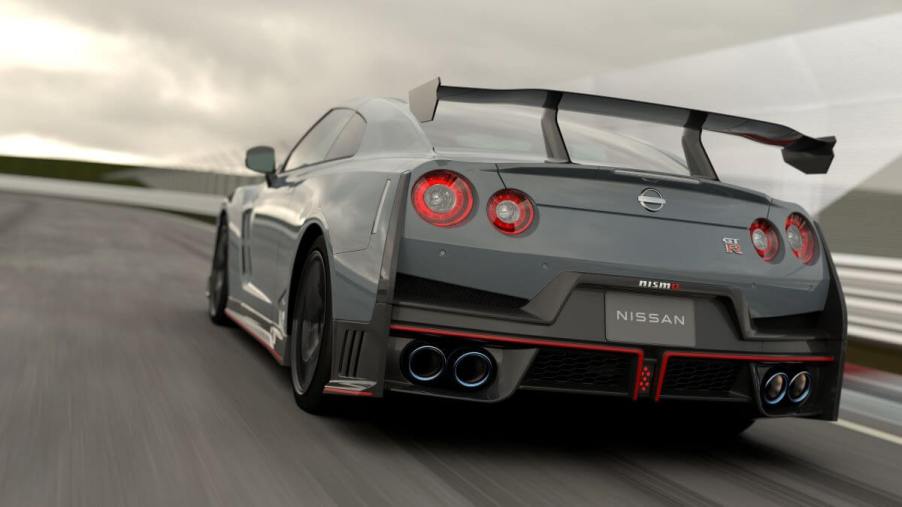
Why Has Nissan Never Redesigned the GT-R?
Whether you buy a used model of the Nissan GT-R or get a new one, you’re getting pretty much the same vehicle. Nissan hasn’t added any major changes to its supercar since introducing it to the market. What did the brand offer in the first GT-R model, has its unchanged status affected it, and what can you expect with the 2024 version?
When did the Nissan GT-R come out, and what was it like?
The Nissan GT-R was introduced in 2007 and first sold for the 2009 model year. Back then, it was known as the “everyday supercar.” In this way, it was pitched as a high-performance vehicle that you could actually use as your daily driver.
This model came with a price tag of $70,000 at the time. Powering it up was a 3.8-liter V6 engine producing 473 hp. Paired with it was a six-speed dual-clutch automatic transmission enabling the GT-R to get 16 mpg in the city and 21 mpg on the highway, according to Kelley Blue Book.
It came with standard features such as traction control, remote engine start, cruise control, a navigation system, and an alarm system. It also had an all-wheel drivetrain, stability control, limited slip differential, and hill start assist.
Critics liked how it drove, especially the power driving the vehicle forward. As for its rivals, the GT-R could go toe to toe with some pretty big names in its category, like the Audi R8, BMW M4, Chevy Corvette Z06, and Porsche 911.
Is it good or bad that there’s been little change to the GT-R?
Despite having over 10 years on the market, the Nissan GT-R has had few changes. In fact, it’s still a part of the same generation as the 2009 model. Many vehicles go through redesigns every 5-6 years, give or take, which keeps the cars freshly updated. However, Nissan has chosen to only make a few minor updates here and there over the years.
Exceptions to this are the low volume high-end luxury vehicles like Rolls Royce’s Phantom and the Lamborghini Huracan. These models avoid constant redesigns due to the cost of research and development, so updates are done sparingly.
While Nissan’s daily driving supercar still offers high-quality features, it lags behind its competitors. For example, its navigation system isn’t as accurate as possible, its transmission is slow to respond when shifting gears, its infotainment system is outdated, and it offers Apple CarPlay, but no Android Auto. Plus, even its performance can be beaten by competitors.
Overview of the 2024 Nissan GT-R
Fast forward to the 2024 model of the Nissan GT-R, and it’s still powered by the same engine as its introduction model from the 2009 model year. However, it now generates 565 hp and 467 lb-ft of torque, according to Edmunds. The automatic transmission hasn’t changed, though. However, the NISMO trim track version tunes the engine to produce 600 hp and 481 lb-ft of torque.
For the daily driver or Premium trim starting at $120,990, you can expect 20-inch forged wheels with high-performance tires mounted on them, front and rear Brembo brakes, leather upholstery, and an 11-speaker Bose audio system.
The next step up is the T-Spec trim with a starting MSRP of $140,990. Key features include a Brembo carbon ceramic braking system, 20-inch gold-painted RAYS wheels, semi-aniline leather-appointed front seats, and a gold-stitched interior.
Lastly is the ludicrously priced NISMO trim at $220,990. Along with an upgraded engine output, NISMO enhancements include a slightly altered body design, a NISMO-tuned suspension, new NISMO leather-appointed seating, and plenty of cosmetic changes for a more sporty, track-ready appearance.
The Nissan GT-R has been on the market for over a decade but hasn’t seen much in the way of changes. While it’s not necessarily a bad thing, it is a bit weird since most vehicles get redesigned every 5-6 years or so. The only issue is Nissan’s avoidance of major updates has made this supercar gets surpassed by its rivals with fresh new looks and tech.



